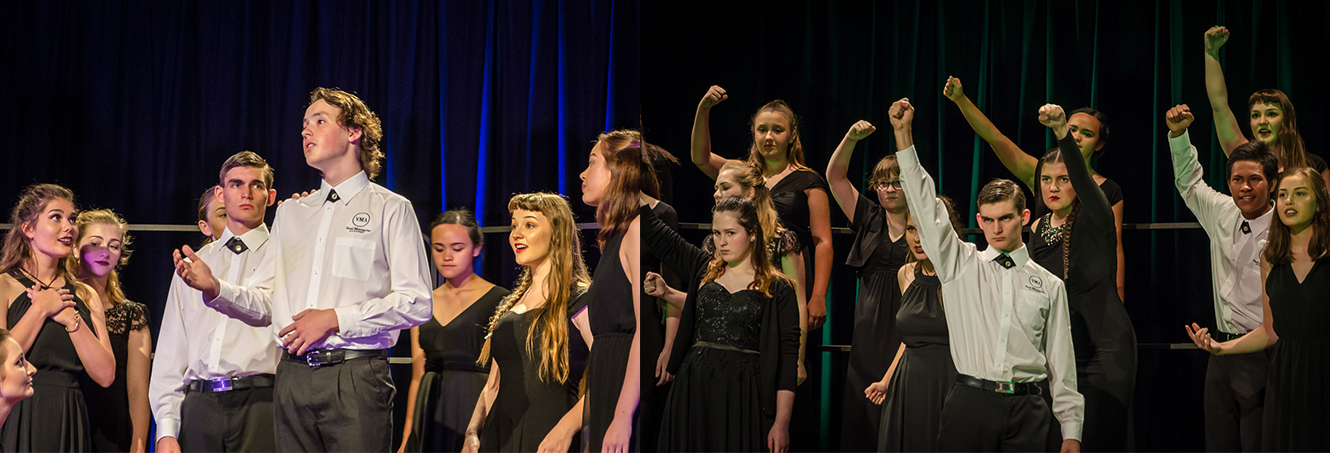
Managing Medleys in the Choral Context
Posted: October 09, 2017
Medley: noun. In music, a medley is a collection of different tunes or songs that are played one after the other as a single piece of music. (Collins Dictionary)
During the past term, two ensembles from our Vocal Manoeuvres Academy each prepared and presented a choral medley in performance.
In preparing for the performance of the medleys, we engaged the services of Christopher Gabbitas and Timothy Wayne-Wright, two musicians renowned for their meticulous preparation and performance of choral and vocal ensemble repertoire.
These two accomplished performers pushed our singers to explore new depths of character construction, in order to bring greater richness and complexity to their roles. The insight gained during the sessions prompted much discussion amongst the Vocal Manoeuvres Academy choristers, particularly as we were encouraged to access the diversity of characters presented in each medley, often moving from segment to segment in rapid succession.
We quickly came to understand the challenge of presenting a medley in performance and moving beyond the ‘dots on the page’. We undertook a path of study to gain a greater understanding of the characters of each medley segment, the story lines and lyrics so that a well characterised performance could be crafted.
The first point we considered was the necessity to gain a good understanding of the respective characters through a concept presented as ‘Character Spine’. This has become a useful tool for us in developing a deeper understanding between the chorister and their character. The spine is that element of a character’s personality that remains constant from the beginning of the medley segment to the end. This is crucial to us capturing the essence of the character’s personality and we felt that it enabled us to really bring the character to life in performance.
After we discussed the character in depth, filleted the lyrics and completed our research, we were directed to use our imagination as the final step to flesh out the details of the character and bring the medley segments together.
This chain of elements was groundbreaking for us and the complete reverse of how we would typically proceed with preparing and presenting work for performance.
Working in large ensembles, we now realise we cannot present a convincing performance using our imagination in isolation without the backup of discussion, research and analysis first. Christopher and Timothy encouraged us to not underestimate the power of our imagination in the process of enlivening our performance, yet, also demonstrated that you cannot use your imagination alone without first gaining greater insight into the character and story.
For the performance of each segment in the medley, we discussed and considered each element carefully and selected a single word to prompt recall and enable us to access that character’s spine quickly, effectively and uniformly. We now do this for every work in our repertoire, not solely the medleys, and have learnt not to underestimate the power and the necessity of imagination in the choral performance. Combining this imaginative work with our careful research, discussion and analysis gave us the edge to our performance.

Left image: The young singers from the Vocal Manoeuvres Academy Youth Ensemble sharing empathy in a tender moment during Something There from Beauty and the Beast
Right image: Minutes later, moving seamlessly into a powerful characterisation in The Mob Song during the Medley from Beauty and the Beast.